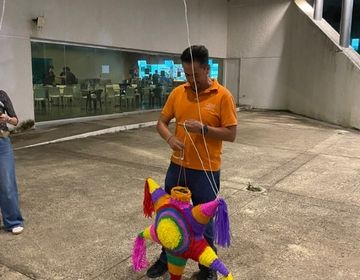Finding Serenity in a Cenote
One of the most blissful aspects of the Yucatán Peninsula is – strangely enough, its karst topography.
Here’s the Reader’s Digest version. Essentially the Yucatán Peninsula served as a welcome mat for a giant asteroid that landed 66 million years ago. Thanks to that massive fireball, two remarkable things happened. First, the dinosaurs were extinguished. And second, the Yucatán became covered in cenotes or sinkholes filled with fresh water and surrounded by magnificent limestone cliffs.
There are some 2,600 cenotes throughout the Yucatán Peninsula nestled in the jungle, waiting to rejuvenate a weary traveler or two.
The Maya called them dzonots. They came to the area in 3,000 B.C. and built an accomplished empire, mastering the science of astronomy, mathematics, and architecture. The Maya believed cenotes served as an entrance to the underworld and used these crystal-clear wells to send messages to the Gods – which unfortunately, often meant sacrificing a member (or two, or three), of the community.
Thankfully there are better ways to experience a cenote.
Gift yourself an afternoon and plunge your body into the refreshing waters. Most likely, you’ll be required to wear a life-jacket – don’t let it get in your way. Float on your back, stare at the sky, and like the Mayas, take in the glory of this magnificent opportunity to commune with the underworld.
Related Posts
Why Should You Choose to Study Abroad in Mexico?
By: Michael Kline Are you ready to embark on a journey that combines academic enrichment, cultural discovery, and personal growth? Studying abroad in Mexico with CIEE offers all this and... keep reading
Top 7 Spanish Immersion Programs with CIEE Study Abroad
Let’s be real: There’s no better way to learn Spanish than actually living it. Forget the textbook exercises and Duolingo streaks – envision yourself chatting with locals about fútbol (not... keep reading
Study Abroad in Mexico: The Ultimate Guide
Ready to trade your dorm room for palm trees and panuchos? Studying abroad in Mexico is your chance to do just that! Picture this: You’re taking classes at the stunning... keep reading




